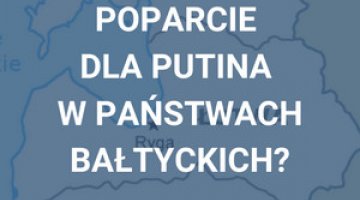Latvia: Kariņš’s second government
On 14 December, the Latvian Parliament (Saeima) gave a vote of confidence to the government of Prime Minister Krišjānis Kariņš. The new cabinet was supported by 54 out of 100 parliamentarians, with 37 opposed. This ended the two-and-a-half-month process of forming a government coalition. Its final composition includes three parties: the centre-right New Unity (Jaunā Vienotība, JV), which won the October elections (for more details, see ‘Latvian parliamentary elections: victory for the centre-right’), the nationalist National Alliance (Nacionālā apvienība, NA) and the United List (Apvienotais saraksts, AS). The negotiations took so long because of New Unity and the United List had different hopes regarding how many positions they would get in the new government (see Appendix on the makeup of the new cabinet) as well as policy differences.
Commentary
- The most difficult part of the negotiations was the attitude displayed by the United List, whose representatives criticised the way in which Kariņš conducted the talks. This group’s political ambitions could destabilise the government, especially since the coalition has only a very small majority in parliament. Another factor that could negatively affect its cohesion is the discrepancies that will arise as the budget goes through parliament next spring. Any attempt to increase spending (including raising the minimum wage) could be problematic for AS, the party which represents small businessmen, among others. The parliament’s choice of a new president next summer may also reignite disputes within the coalition. New Unity will expect Egils Levits to be re-elected, but AS may not support his candidacy.
- Domestic priorities in the coming months will include the management of the economic crisis in the country and the practical implementation of the reforms which have already been formally introduced. Like other countries in the region, Latvia is struggling with an energy crisis and galloping inflation. It also plans to start discussions on taxes. According to the wording of the highly ambitious coalition agreement, deep changes will also be made in the areas of energy, security and education. The government also intends to increase the competitiveness of the Latvian economy. However, the lack of a viable financial base may cause problems in implementing these plans. Only after next year’s budget is passed will it become clear whether these reforms will actually come to fruition.
- In foreign policy, the government will maintain its current course, which includes supporting Ukraine. The guarantor of continuity is Edgars Rinkēvičs, who will remain Latvia’s foreign minister (a position he has held uninterruptedly since 2011). In security and defence policy, the new head of the Defence Ministry, Ināra Mūrniece (who was speaker of parliament in the previous term), will also continue her previous pro-NATO policy, and Latvia will work to further develop cooperation within the North Atlantic Alliance. In this area, Riga will pay special attention to its work with the US and the countries participating in the eFP (NATO enhanced Forward Presence), including Canada, Spain and Poland.
APPENDIX. Composition of Krišjānis Kariņš’s second government
Prime Minister – Krišjānis Kariņš (JV)
Defence Minister – Ināra Mūrniece (NA)
Minister of Foreign Affairs – Edgars Rinkēvičs (JV)
Minister of Economy – Ilze Indriksone (NA)
Minister of Finance – Arvils Ašeradens (JV)
Minister of Internal Affairs – Māris Kučinskis (AS)
Minister of Education and Science – Anda Čakša (JV)
Minister of Climate and Energy – Raimonds Čudars (JV)
Minister of Culture – Nauris Puntulis (NA)
Minister of Social Welfare – Evika Siliņa (JV)
Minister of Transport – Jānis Vitenbergs (NA)
Minister of Justice – Inese Lībiņa-Egnere (JV)
Minister of Health – Līga Meņģelsone (AS)
Minister of Environmental Protection and Regional Development – Māris Sprindžuks (AS)
Minister of Agriculture – Didzis Šmits (AS)





